Surviving the drought in Somalia: Parents forced to serve their children wild fruits to cope with hunger
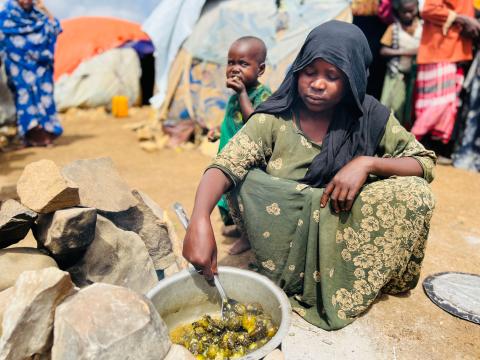
Drought conditions across Somalia have continued to worsen. Little to no rains between April and June have made this current season among the top three driest on record, it has been reported that the severity of the current drought conditions mirrors 2010/2011 and 2016/2017.
With high chances of crop and livestock losses amidst soaring prices of food locally and no food aid, millions of Somalis are bracing themselves for extreme food insecurity and widespread hunger. At the beginning of June, at least 213,000 people were reported to be one step away from famine like conditions.
Faced with depleted means of livelihoods, hundreds of thousands of Somalis are migrating into urban areas, most ending up in settlements for internally displaced persons (IDPs) in the hope of getting assistance to survive the drought.
30-year-old Hawa, her children, her husband plus a relative have been living in an IDP settlement in Baidoa town, in southern Somalia for six months now. She says the family moved here from a village nearly 70 kilometres away, in the hope of receiving assistance. The conditions were so bad there.
Her basic makeshift shelter is one of the first we spot as we begin our tour of the sprawling IDP site. It’s about 11 A.M. and on a three-stone cooking fire outside the shelter, Soda- one of Hawa’s relatives is stirring the wild fruits she’s been boiling for the last hour or so.
Throughout this interview as we speak with Hawa and her husband, Mohamed, about the food situation in their household, the little children are immersed in the bowl of boiled wild fruits in front of them, by the time we are done, so are the wild fruits.
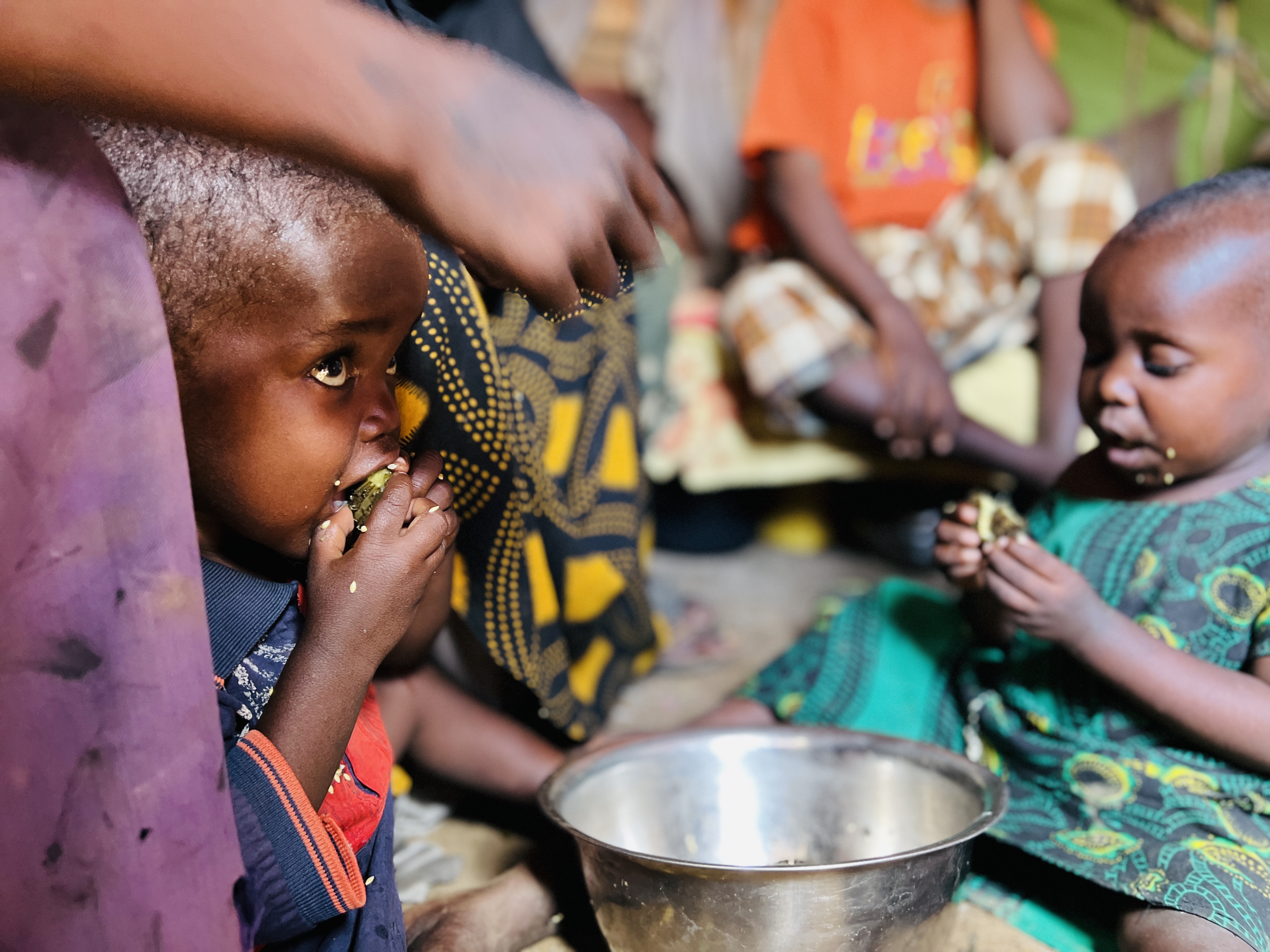
Hawa tells us, all the sorghum and maize they had planted last season was lost to the drought. Left with nothing to survive on, it was time to leave and look for a means of survival. They’ll not be returning anytime soon.
But life in the IDP settlement has not been easy. “It’s been difficult living here with no work. Just look around, she prompts. We don’t have food, that’s why I am feeding my children wild fruits,” Hawa explains, distress written all over her face.
In the month of April during the month of Ramadhan, the family received US$60 in cash through World Vision’s drought response package, funded by the World Food Programme.
“It was a huge relief because we were able to buy food to last us some few days,” she says.
Generally, the assistance doesn’t last long. The food runs out fast. Besides large family sizes to feed, those who receive also offer to share the little they have with others.

As the drought persists, it is becoming difficult for families to find or afford food. A look around the IDP site suggests that households are running out of food options, even forcing mothers to feed wild fruits to their children.
“We have three options to survive this drought: food aid, if that runs out, we go find work and if the work isn’t there, we resort to begging in town or from the neighbours,” Hawa explains. “At times, we’re [unable] to find work or get any help from begging, then we will just eat these wild fruits.”
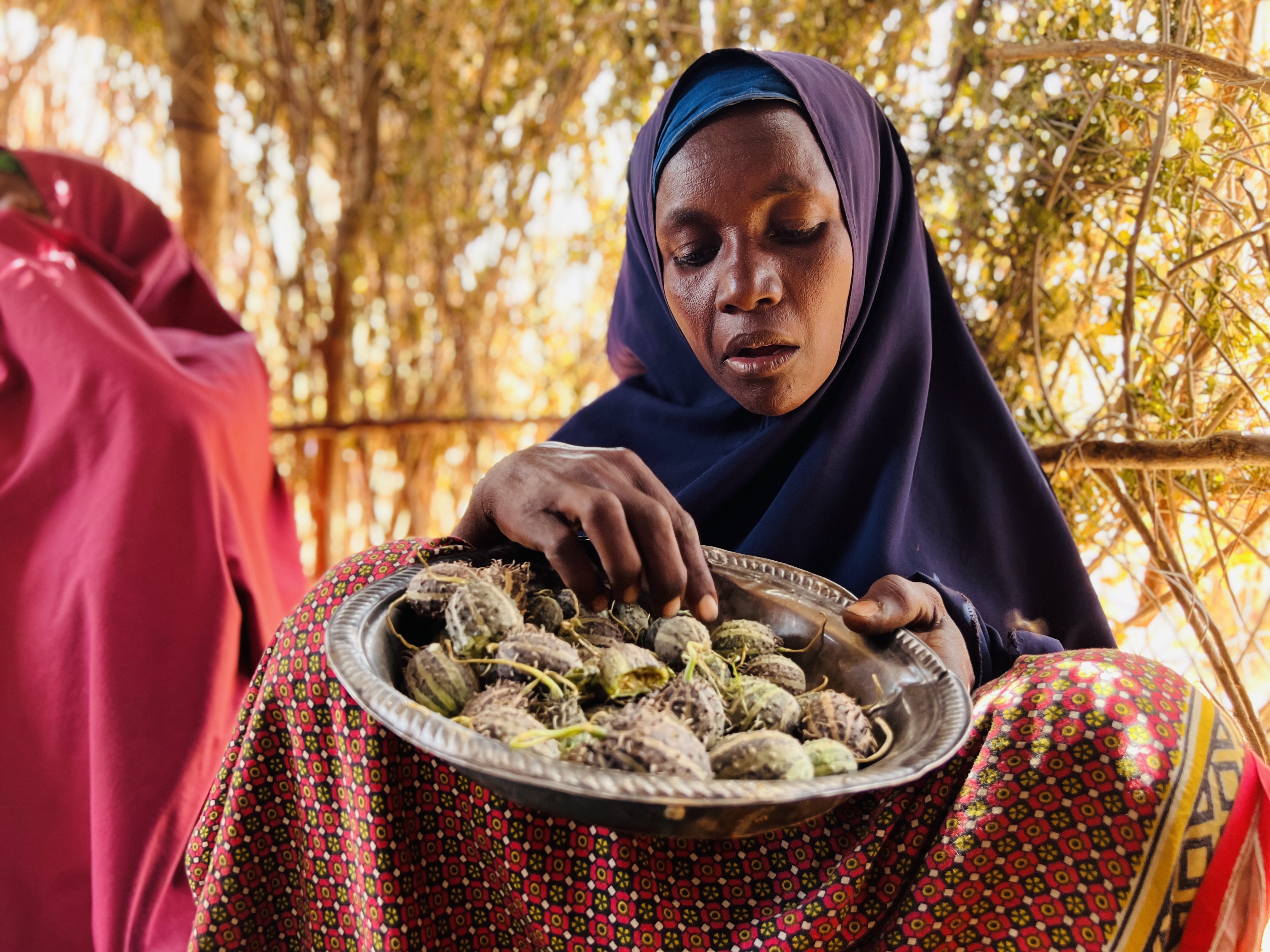
“When they eat these wild fruits? They cry a lot asking why do we always eat these wild fruits.”
“When the children are hungry, they will start crying, asking for food and will not stop. When I have water, I give them to stop them to stop crying but it will be for a moment before they start again, demanding for food,” Hawa says.
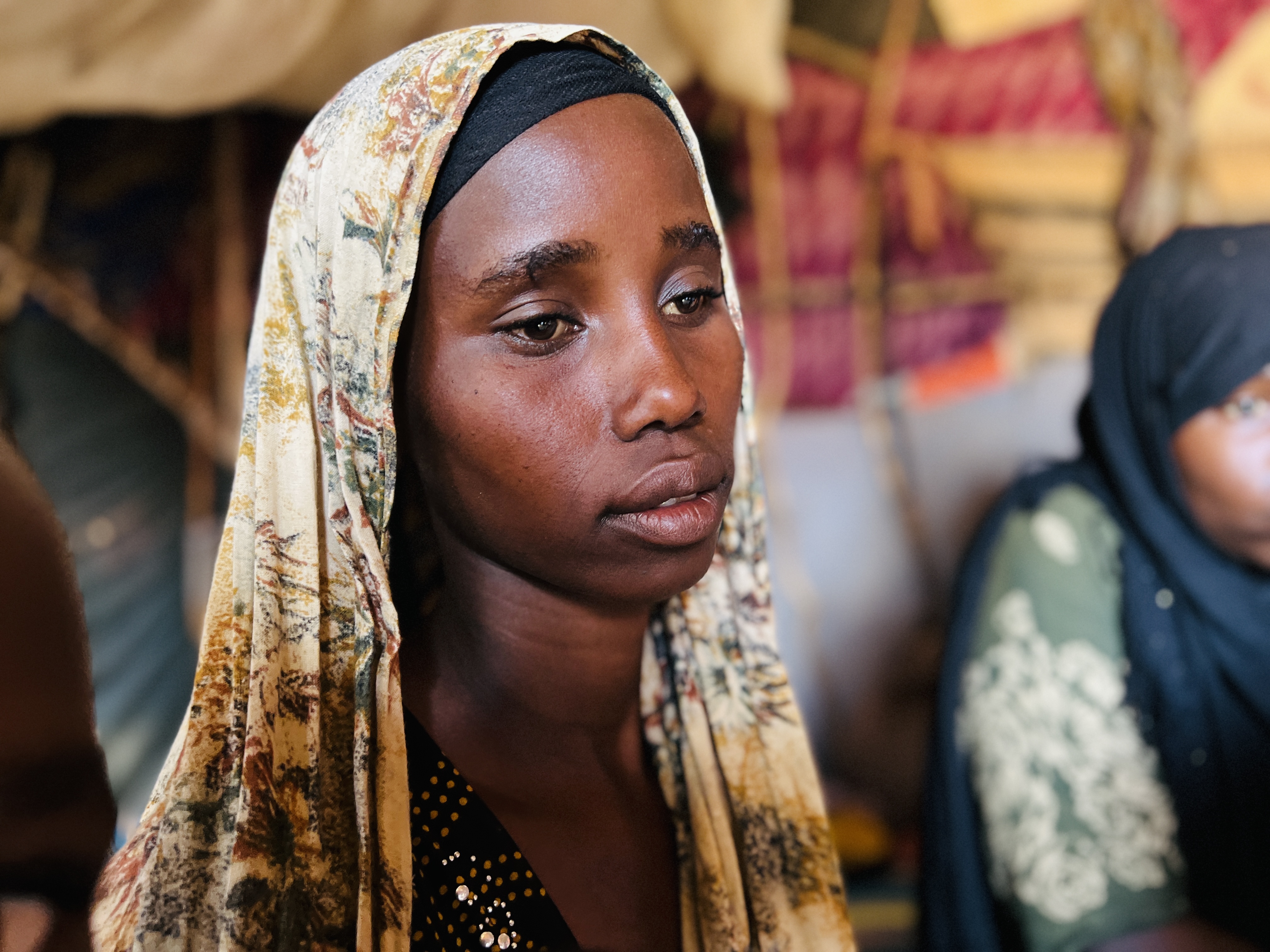
Without enough food and good nutrition, children are at increased risk of malnutrition
While this drought is affecting everyone, children have been hit especially hard. An estimated 1.5 million children under five years old face the risk of acute malnutrition through the end of the year. 386,400 of these, are likely to be severely malnourished if emergency aid is not delivered.
Nutrition nurses at one of the health facilities run by World Vision says severe malnutrition cases admissions are on the rise, anywhere between 30-40 in a day.
Two-year-old Somoow weighs slightly over six kilogrammes, an indication of severe acute malnutrition. Before being treated for malnutrition, Adam had also suffered acute watery diarrhoea (AWD).
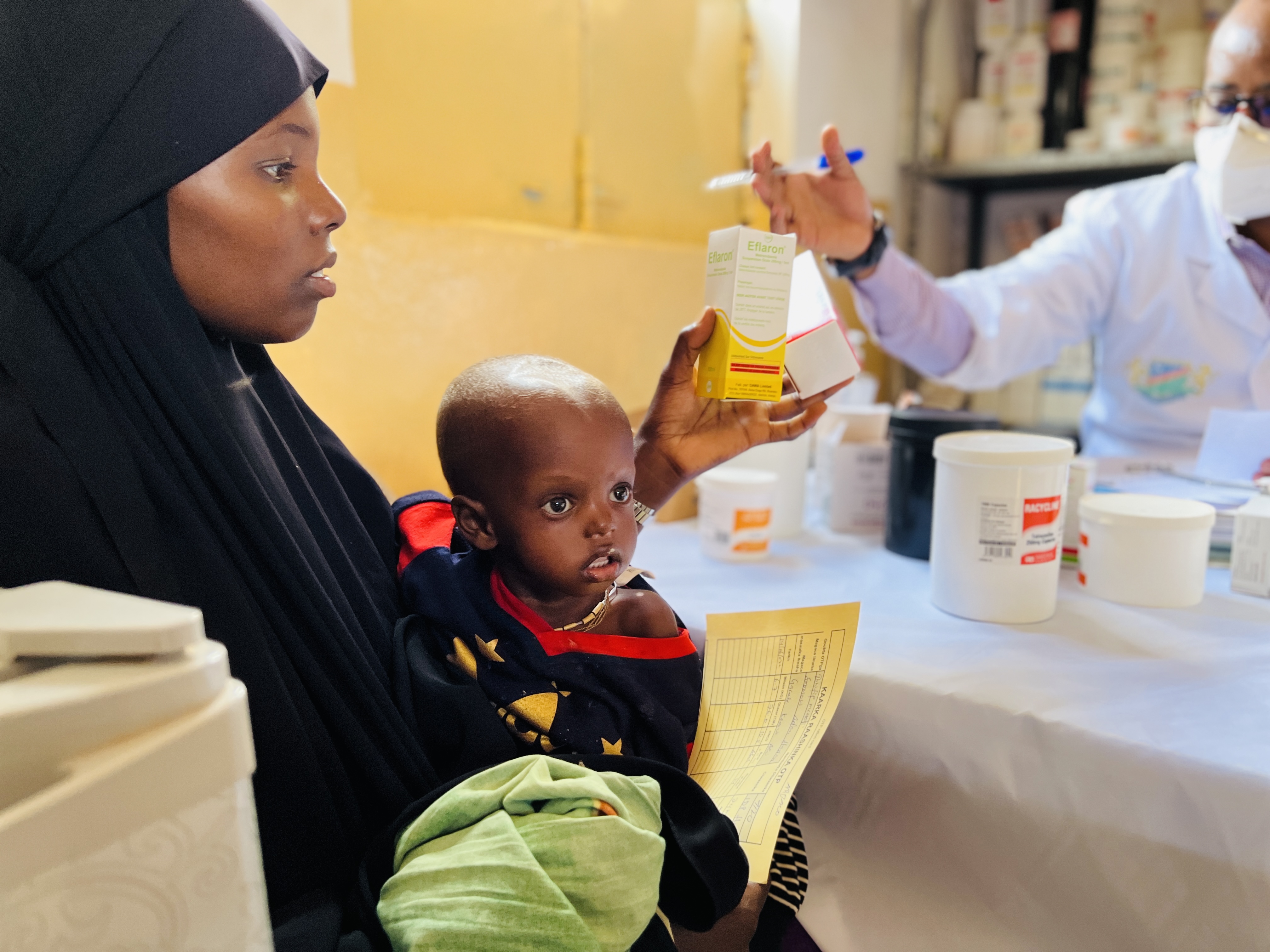
“The children are just not receiving enough food or good nutrition, that’s why most of them you’ve met are looking malnourished or on the brink of malnutrition,” Mohamud Abdinoor, a nutrition nurse in a World Vision-run Darusalam outpatient therapeutic feeding programme centre in Baidoa.
Waterborne diseases attributed to water shortages and poor sanitary conditions in the IDP sites are also driving a rise in malnutrition cases.
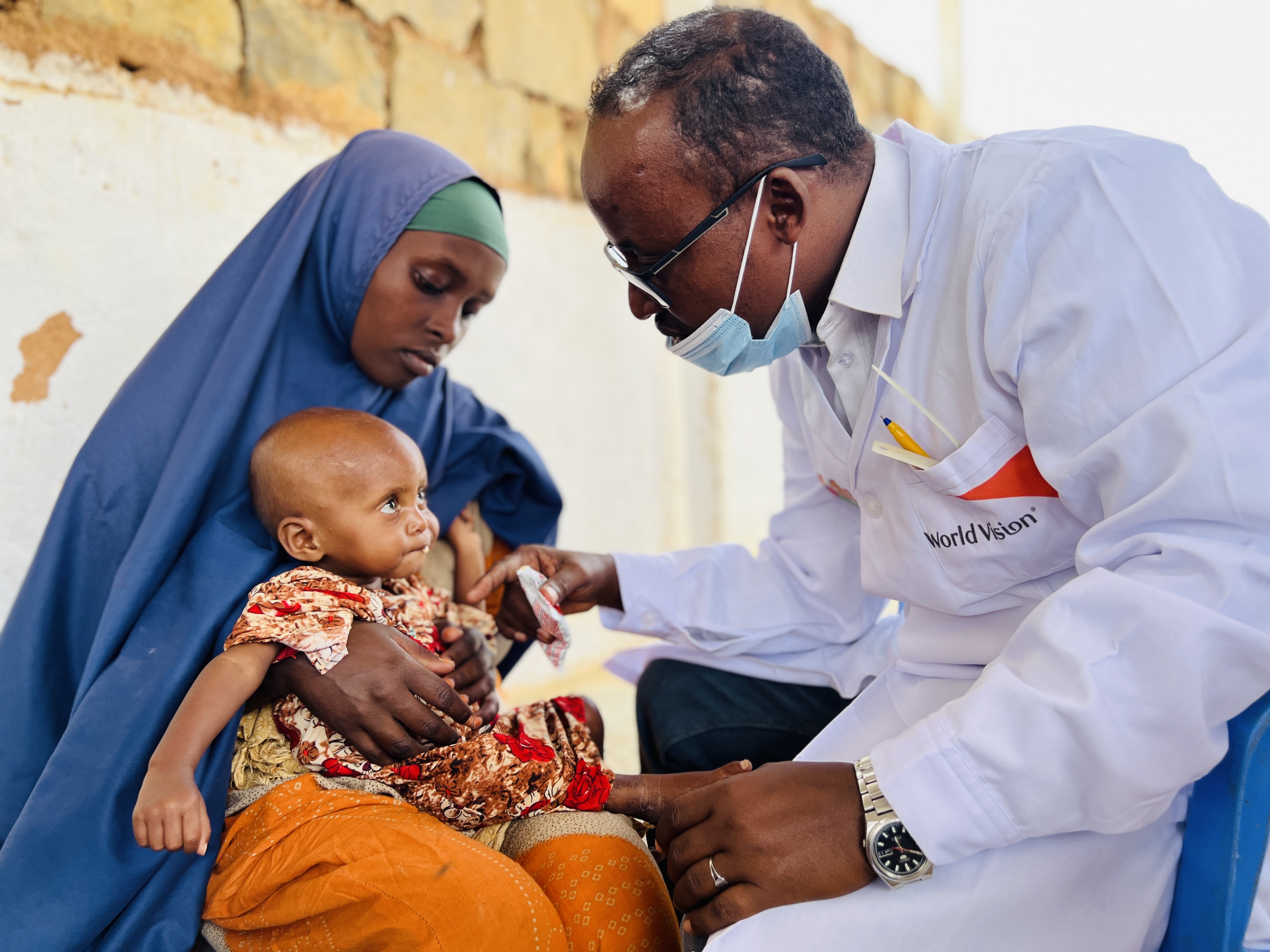
Abdikadir Aiden a camp leader in one of the IDP sites we visited says the situation is critical. “People here are in dire need of food assistance and water.”
World Vision is reaching nearly 19,000 households across 91 IDP sites in Baidoa, some with food vouchers and others cash assistance to help them meet their food needs. Funded by the World Food Programme (WFP), each household- often of an average size of six members- receives either US$75 in cash assistance or US$95 worth of food vouchers monthly.
But the scale of need- driven by the daily new arrivals- far outstrips the current assistance. Also because of the large number of IDPs hosted over hundreds of sites, Baidoa is one of four sites hosting drought-displaced populations of highest concern for a risk of famine.
As part of a scale-up plan to respond to growing needs, 15,000 more households will start receiving similar kind of assistance from July.

Article by Lucy Murunga, Senior Communications Manager for World Vision Somalia.
World Vision teams around the world are responding to the growing needs of the global hunger crisis.